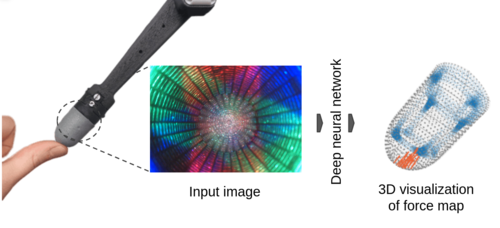2024
2022
Richardson, B. A., Kuchenbecker, K. J., Martius, G.
A Sequential Group VAE for Robot Learning of Haptic Representations
pages: 1-11, Workshop paper (8 pages) presented at the CoRL Workshop on Aligning Robot Representations with Humans, Auckland, New Zealand, December 2022 (misc)
Andrussow, I., Sun, H., Kuchenbecker, K. J., Martius, G.
A Soft Vision-Based Tactile Sensor for Robotic Fingertip Manipulation
Workshop paper (1 page) presented at the IROS Workshop on Large-Scale Robotic Skin: Perception, Interaction and Control, Kyoto, Japan, October 2022 (misc)
2021
Werner, M., Junginger, A., Hennig, P., Martius, G.
Informed Equation Learning
arXiv, 2021 (misc)
2016
Martius, G., Lampert, C. H.
Extrapolation and learning equations
2016, arXiv preprint 1610.02995 (misc)
2012
Der, R., Martius, G.
The Playful Machine - Theoretical Foundation and Practical Realization of Self-Organizing Robots
Springer, Berlin Heidelberg, 2012 (book)
2010
Martius, G., Hesse, F., Güttler, F., Der, R.
\textscLpzRobots: A free and powerful robot simulator
\urlhttp://robot.informatik.uni-leipzig.de/software, 2010 (misc)
Der, R., Martius, G.
Playful Machines: Tutorial
\urlhttp://robot.informatik.uni-leipzig.de/tutorial?lang=en, 2010 (misc)


